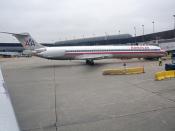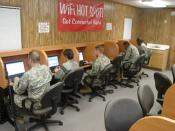Introduction
AMR (American Airlines and its subsidiaries) is the United States' largest airline, serving 150 destinations worldwide, with hubs in Dallas/Ft. Worth, Chicago (O'Hare), Miami, St. Louis, and San Juan, PR. Overall, AMR has the highest number of operating aircraft, full time employees, revenue passenger miles (RPM) and available seat miles (ASM) in the industry. However, after September 11, 2001, bigger may not be better. Despite the rich history of American Airlines, the large fleet of operating aircraft and high number of unionized employees equate to higher fixed costs for American relative to its competitors. In a market where fuel costs are extremely volatile and travelers expecting lower fares, it is extremely important to take a close look at American's cost structure as it relates to the potential environmental shocks that could face industry.
Operating Expenses
Examining AMR's operating expenses we can see that the airline business is an extremely capital and labor intensive business.
AMR's major categories of operating expenses are consistent with the industry. By far, the wages, salaries and other employee benefits category is the largest operating expense, followed by aircraft fuel. Other expenses include other operating expenses, depreciation and amortization (which will be excluded from the cost analysis because it is not a cash expense in the current period), rental and landing fees, commissions, maintenance and repairs, aircraft rentals, and food service (Exhibits 1, 2, 3). American Airlines' overall cost structure leans more heavily to fixed costs, some of which are committed fixed costs and others which are more discretionary in nature (Exhibit 4). Fixed costs primarily consist of airplanes, maintenance, and wages, while variable costs come most notably from fuel.
A closer look at AMR's wages, salaries, and benefits shows that the company has the highest number of full time equivalent employees...


